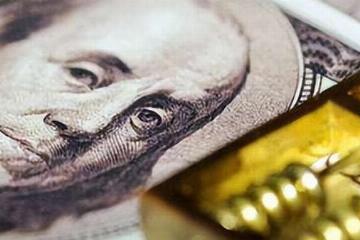Is the Era of Ultra-Low Interest Rates Over for the Fed?
Advertisements
On Wednesday, the Federal Reserve took the anticipated step of lowering interest rates yet again, but this time it also hinted at a pause in future rate cutsFed Chair Jerome Powell emphasized that the central bank is now significantly closer to what's referred to as the neutral interest rate—an essential benchmark in determining the future monetary policy trajectory of the U.S. economyThe question of how far the U.S. economy really is from this neutral rate has emerged as a central concern, especially as forecasts suggest that the neutral rate may be higher in the post-pandemic era—pointing toward the conclusion of an extended period of historically low interest rates.
Nick Timiraos, a reporter from the Wall Street Journal and a contributor to the "New Fed" newsletter, underscored the significance of Powell's remarks concerning the neutral interest rateThe notion of what constitutes a neutral rate has transitioned from being a minor technical detail to a pivotal issue in our economic discussions
In simpler terms, in the context of a post-pandemic recovery, what exactly is considered "neutral"?
The concept of the neutral interest rate refers to the hypothetical level at which the economy is considered to be in a healthy state—characterized by full employment and stable inflationThis pivotal rate, however, cannot be directly observed; it is inferred through a close examination of various economic indicatorsWhen borrowing and consumer spending are vigorous, leading to upward pressure on prices, the effective interest rates may well fall below the neutral levelConversely, if lending slows down and inflation wanes, it is likely that the current rates exceed the neutral threshold.
Earlier in the year, debates surrounding the estimation of the neutral rate were not particularly pressing, as most Federal Reserve officials were convinced that interest rates were in a restrictive territory
- Cambrian Soars Past Nvidia, Broadcom with 4x Surge
- The Fall of German Auto Giants
- Perspectives on Tech Stocks After Rate Cuts
- Yen Plunge Casts Doubt on Japan Rate Hike
- Treasury Yields Rise Amid Asset Scarcity
However, following the Fed's decision to cut rates by a full percentage point and with the economy showing signs of robustness, this topic has taken center stageTimiraos noted that just as a ship's captain trains to avoid crashing into a dock as they approach, central bank leaders may exercise increased caution about cutting rates if they believe the neutral rate has risen.
Powell acknowledged this sentiment during the recent announcement, stating, "We don’t know exactly where it is, but… we can be sure we’re now closer by a hundred basis pointsFrom here on out, we’re entering a new phase, and we will approach further rate cuts with caution."
The potential reality is that the neutral interest rate may now be significantly higher than before the pandemicIn the aftermath of the 2008 financial crisis, economists and Federal Reserve policymakers gradually lowered their estimates of this neutral rate
With extended periods of ultra-low interest rates and monetary stimulus failing to provide substantial economic growth, many experts theorized that the economy might be trapped in a cycle of low rates due to demographic challenges like an aging workforce coupled with insufficient long-term investment demand.
However, after the pandemic, the introduction of various fiscal stimulus measures has propelled the economy back to a new equilibrium, driving a gradual increase in estimates for the neutral rateOver the last year, Federal Reserve officials have consistently raised their predictions for what this rate might beAccording to Timiraos, the central bank's officials forecast long-term interest rates quarterly, which effectively serves to inform their neutral rate estimationsFrom a median forecast of 4.25% in 2012, this rate fell to 2.5% by 2019 and continued to hover at that level until 2023.
Nonetheless, predictions for the neutral rate have shown an upward trend across each quarter of this year
The latest forecast released on Wednesday suggested a neutral rate of 3%, with eight of the nineteen officials estimating rates above this figureJust six months earlier, only two officials believed that the neutral rate could exceed 3%. As of now, the benchmark federal funds rate sits at approximately 4.3% following the latest interest rate reduction.
Should the neutral rate indeed be higher, it could mean that the Federal Reserve might observe an extended period during which they pause any further rate cutsTimiraos pointed out that Powell remains skeptical about relying on exact neutral rate estimates to guide policy, emphasizing that officials can only assess its impact on the economy through observation and analysis.
A former senior advisor to Powell, Jon Foster, noted that this skepticism could result in delays; even if there is evidence that the neutral rate has risen, the Fed may struggle to find clear indicators to adjust its policy accordingly

Foster speculated that the neutral rate might currently range between 2.5% and 4%.
In the lead-up to the most recent decision to lower rates, certain Fed officials expressed concern over the implications of further rate decreases based on potentially flawed estimates of neutral ratesFor example, Lorie Logan of the Dallas Fed cautioned that excessive rate cuts could potentially reignite inflation, forcing the Fed to raise rates aggressively in responseShe underscored that recent economic data suggests the neutral rate might already be higher and close to where the current federal funds rate is positioned.
Timiraos’ analysis noted that the economy has remained robust, even amid rising interest rates, which may reflect some temporary factors such as increased immigration or businesses and households locking in low rates during the pandemic periodHowever, if economic growth continues over time, policymakers may start to perceive that the economy has transitioned into a new normal characterized by a higher neutral interest rate.
Jason Thomas, the chief economist at Carlyle Group, expressed an optimistic view, arguing that growing labor productivity indicates a distinction between the current economic landscape and the preceding decade following the global financial crisis